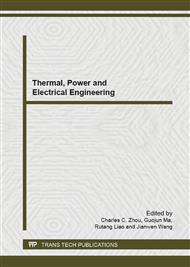p.472
p.476
p.481
p.487
p.491
p.495
p.501
p.509
p.513
Numerical Simulation on Water Mist Fire Suppression System Operation in Typical Environment
Abstract:
Water mist fire suppression system is widely used in many places, for its little damage and greatly reduces the cost of extinguishing fire. But because of the intricate extinguishing mechanism of water mist, it is difficult to design an optimal water mist fire suppression system in a typical place. With the rapid development of computer technology, computational fluid dynamics (CFD) has already been proved to be a useful and powerful tool in fire safety science. Fire Dynamics Simulator (FDS) is used to simulated the interaction of water mist and fire in a typical fire scenario in this paper. Two design schemes of water mist system are compared to prove which one is better. Through simulated by FDS on these two cases, the water mist system with 4 sprinklers is suited in the restroom.
Info:
Periodical:
Pages:
491-494
Citation:
Online since:
August 2013
Authors:
Keywords:
Price:
Сopyright:
© 2013 Trans Tech Publications Ltd. All Rights Reserved
Share:
Citation:


